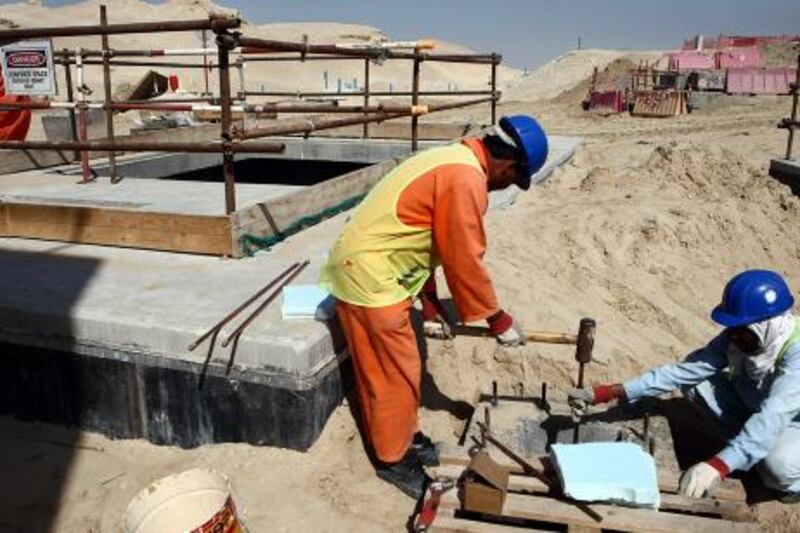ABU DHABI // Before the end of the year, Abu Dhabi could have a new desert park. Located in Al Wathba, 40 kilometres from the capital, the park is unlikely to become a regular weekend hang-out for residents.
But for those ready to make the trek, the project named Hayat - Arabic for 'life' - represents a chance to combine enjoyment of the great outdoors with learning.
Currently barren desert, the four-acre forest will be created next to a new sewage treatment plant, which is scheduled to begin operations in August. The forest will thrive using water produced by the plant. In addition to visiting the forest, visitors will also be able to see the process by which waste water from sinks, showers and toilets is processed to be used again.
Marc Richli, the executive managing director at Al Wathba Veolia Besix Waste Water, which is building the treatment plant, said: "This is not just a forestation project, it is part of an effort to make people aware about the value of water."
The company was established as a partnership between the Abu Dhabi Water and Electricity Authority, Veolia Water and the construction company Besix. In addition to building the treatment plant, it will also operate it for 25 years. When operating at full capacity, the plant should produce 300,000 cubic metres of water every day. At the beginning, the output is expected to be half that amount. Of this, most is expected to go back to the capital for reuse in landscaping with only 0.05 per cent being used on site for the needs of the new forest.
"It is really a water drop in the sea," said Céline Delabie, the project coordinator, about the irrigation needs of the new forest.
The forest will be located along a hill gently sloping towards the southern tip of the sewage treatment plant. It will be intersected by a stream, about 30 metres long and between a metre and three metres in width. Along the creek, there will be a boardwalk, surrounded with reeds. It is the UAE's wadis - intermittent rivers that appear in the mountains in winter and spring - that provide the inspiration behind the concept, said Steven Velegrinis, a senior landscape architect at Woods Bagot, an international consultancy.
"The forest is designed to mimic a desert environment with its water," said Mr Velegrinis, who explained that it will be different in feel than Abu Dhabi's parks and landscaped gardens.
Rather than featuring species introduced from tropical and subtropical parts of the world, it will consists of indigenous plants, shrubs and trees which are part of the natural landscapes of the UAE . It will also provide food and shelter for insects, birds and mammals. A total of 20,000 plants from 45 species will be planted. Among them, the ghaf, Prosopis cineraria, will be prominently represented. Once commonly growing in large numbers in valleys among the desert dunes, the ghaf has become a rare sight, as the trees have been eaten by camels in some areas.
The project will cost more than Dh3 million - including the irrigation network, planting and maintenance for 25 years - and the company is looking for project sponsors. Sponsorship packages vary from Dh100, the cost to plant one square metre of forest, to Dh1 million - the amount needed to plant an acre. The sponsorship will also cover civil works to make the facility accessible to the public.
Mr Richli said that the aim of the sponsorship is to get people involved in the development of the forest.
"The idea is not to get money as such; we would like people to be involved," he said. "Getting Dh3m should not be complicated, but getting more people can be … we want to have many small contributions."
The team is looking to collaborate with a nursery or a university which could collect the seeds of some of the rare plants in the region and produce saplings. Ms Delabie said work to prepare the ground should start in June, while the irrigation network is to be installed in September.
"We hope to open the forest by the end of the year," she said.





